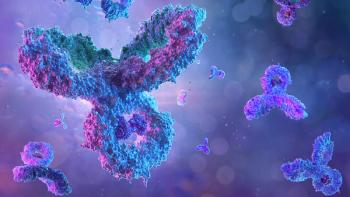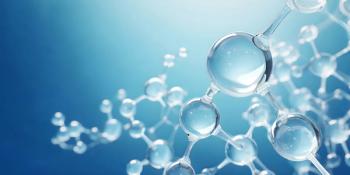
- BioPharm International-04-01-2017
- Volume 30
- Issue 4
Impact of PFS and Filling Process Selection on Biologic Product Stability
The author discusses the impact of prefilled syringe product contact materials and the filling and stoppering process on protein aggregates.
The market for pre-filled syringes (PFS) is expected to grow to reach sales of $6.6 million by 2020 (1). Nine out of the top 10 products produced in PFS are biologics (2). The use of PFS as a primary container and delivery system offers significant advantages for biologic products. These advantages include reduced risk of medication errors, simplified and faster preparation and administration, and reduced overfill requirements--which can reduce batch volumes and cost of the drug substance. While advantageous compared to vials, the use of PFS as a primary container adds additional complexity to what are already considered complex products. The PFS product contact materials, and filling and stoppering process, may have an impact on the formation of protein aggregates and particulate matter. As the link between immune response and protein aggregation has been understood over the past decade, FDA has urged product developers to employ risk reduction strategies to better understand the susceptibility of products to aggregation and to use orthogonal techniques to characterize final product (3, 4). PFS product developers must understand the impact the syringe manufacturing process can have on product contact materials and the influence the filling process can have on particle formation and final drug product quality.
Though vials and PFS are composed of similar materials, such as pharmaceutical-grade glass and rubber, the manufacturing process for syringes and requirements for functional performance increase potential product contract materials. PFS container compatibility issues have been determined to be a root cause of protein aggregation in multiple products (5, 6, 7). The PFS system consists of the barrel, which, on one end has a tip with staked needle, luer lock, or slip tip. The tip or needle is closed with a rubber tip cap or rubber needle cover, often with a rigid plastic cover. The opposite end of the barrel has a flange and is sealed with a rubber plunger stopper. A plunger rod is inserted into the plunger stopper but does not come in contact with the product (Figure 1).
Figure 1. Syringe components.
Differences in materials
The production of glass syringes differs significantly from vials. Until recently, most syringe barrels were made from glass, but new options that are growing in popularity include polymers such as cyclic olefin co-polymer (COC) or cyclic olefin polymer (COP). Glass vials are typically made from both Type IA and Type IB borosilicate glass, while glass PFS use only Type IB. Type IA and IB glass differ in chemistry and in thermal properties, which allows Type IB to be formed at lower temperatures, allowing the syringe barrels to be shaped from long tubes of glass. Additionally, the lower temperatures (less than 1200 °C) used for syringe forming versus vial forming (up to 1400 °C) reduce the risk of delamination (8). The glass tubing is produced through several processes that involve heating the glass mixture, pulling the glass, and blowing through a hollow tip to form a tube (9). The tubing is cut into sections, and a flange is formed first using heat and forming tools. The flange region of the barrel has no product contact. A cone is formed at the opposite end by heating the glass while inserting a tungsten probe and compressing the glass around the probe. The tungsten probe is removed, resulting in a fluid path through the syringe tip. If a staked needle is used, it is placed and glue is applied, which is then cured with ultraviolet light.
Adverse event reports
Since June 2012, five recalls have been issued as a result of glass delamination in vials, while there have been no reports of delamination in syringes during the same time period (10). A greater concern resulting from the production process of syringe barrels is residual tungsten, which has been identified as a root cause for the formation of protein aggregates in epoetin alfa and an unidentified alpha-helical protein (6). Risk of tungsten-induced aggregation may be greater in formulations with a pH less than seven (6, 11). Additionally, the use of vacuum stoppering may increase the likelihood of tungsten-protein interactions because it may remove the air gap at the tip of the syringe, increasing the contact of the drug product with the “tungsten-rich” cone of the syringe (6).
The incidence of tungsten-induced aggregation is formulation-specific and may be molecule-specific. In internal studies, a monoclonal antibody (mAb) solution was spiked with sodium tungstate at levels of 1, 10, and 100 ppm and then analyzed by size-exclusion chromatography (SEC), turbidity, and imaging particle analysis. No patterns were observed that indicated measurable interaction of the mAb with sodium tungstate.
Most PFS are supplied ready-to-fill in a nest or tub format. All glass and most polymer syringe barrels require some level of silicone application to ensure that the plunger stopper moves smoothly during administration. Stoppers and needles may also be siliconized. An advantage of coating barrels with silicone is that it can protect the glass from etching processes resulting from higher pH formulations and further reduce risk of delamination (12). The application of silicone is typically performed by the syringe manufacturer and is usually performed by atomizing viscous silicone fluid using high-pressure air. The silicone may be applied using a fixed needle, which is located at one position during the application process, or a diving needle which applies the silicone while moving within the barrel. The use of the diving needle has been demonstrated to improve the consistency of the silicone coating over the syringe barrel interior and improve the gliding force profile (13). Silicone may be applied as a non-reactive oil, a non-reactive emulsion, or as a reactive or curable silicone fluid. A high-temperature baking process is required to cure silicone emulsions or silicone fluid. Cross-linked silicone is also available in specific low-silicone PFS products.
Silicone has also been implicated in the formation of protein aggregates and protein-silicone complexes (7). Silicone oil-induced aggregation is more likely to occur in formulations lacking in surfactants, at high protein concentrations, and at formulation pH near the protein’s isoelectric point (pI). The occurrence increases with rising silicone oil concentration. Fewer silicone-related particles can be expected in products filled in PFS with baked-on silicone than with silicone oil. Also, agitation of syringes with headspace resulted in greater particle counts than in containers without headspace (13). United States Pharmacopeia Chapter <1787> classifies silicone particles as intrinsic, but cautions that “careful design, control, and application of the silicone oil are recommended to obtain proper functionality with the minimum amount needed for the shelf life of the product” (14). The chapter warns that protein may be absorbed into silicone oil droplets. The mixture of particle sizes of silicone oil droplets and silicone oil-protein complexes may mimic those of inherent protein particles. Fortunately, silicone oil droplets are easily differentiated by their morphology and optical properties when particulate matter analysis is performed by imaging particle analysis (15).
Laboratory studies completed at Baxter Biopharma Solutions have indicated that silicone oil-induced aggregation is product-specific. In a typical study, a mAb formulation was spiked with silicone oil levels of 0.5 mg/mL and 1.0 mg/mL and then agitated on a shaker table for four hours at room temperature. Analysis by SEC, turbidity and imaging particle analysis identified no measurable change in aggregation resulting from the addition of silicone oil. In one internal study, the silicone spiked formulation was placed on stability for nine months at real time and accelerated conditions without indication of impact to product quality. Silicone-sensitive products can be filled in low-silicone syringes or a silicone-free polymer syringe. However, even low-silicone syringes can have lot-to-lot variability. In one such case, high particle counts were observed in a batch of syringes filled with product. Micro-flow imaging was used to identify the particles as silicone droplets based on their morphology. The issue was isolated to one syringe manufacturing lot. In an internal laboratory study, syringe samples from a previously used acceptable lot, the suspect lot, and a new lot were filled with placebo solution, allowed to sit for 30 minutes, and then the solution was drained, pooled, and tested for particles by light obscuration. As suspected, the solution from the suspect lot of syringes contained a higher level of particles than the solutions stored in the other two lots of the same syringe assembly.
PFS filling lines are typically equipped with rotary piston pumps or peristaltic pumps. Historically, piston pumps offered greater accuracy and speed, but advances in peristaltic pump head design, drive motors, and calibration algorithms have narrowed differences in performance for most formulations (16). Accuracy may be decreased when peristaltic pumps are used to dispense viscous formulations greater than 100 cP. Rotary piston, time-pressure, peristaltic, and rolling diaphragm pumps were evaluated for their impact on particle formation in a purified mAb solution (17). The study concluded that while the measured amount of aggregates by SEC was unchanged, use of a piston pump increased levels of proteinaceous particles observed by imaging particle analysis. The author theorized that the increase in particles could be the result of sheer denaturation and concluded that potential for the increase in aggregates may be product-specific (17).
A Baxter product development study provided additional evidence that sensitivity to denaturation during pumping is not only molecule-specific but formulation-specific. Sheer sensitivity was evaluated by stressing a formulated mAb solution at a rate of 1500s-1 for up to three hours using a rotary cone viscometer followed by analysis by SEC and micro-flow imaging. A slight increase in aggregate concentration (< 0.2%) was observed through SEC, but it was well within assay variability and a fragment peak increased (<1%) after three hours. Particle counts by imaging particle analysis also increased within expected levels based on prior studies. The same solution was subjected to 25 cycles of repeated circulation through a piston pump without increases in particle count, aggregates, or fragments. After receipt of a new lot of API, however, small visible particulates were observed in process development samples subjected to piston pumping after storage for seven days. An evaluation using imaging particle analysis and microscopic magnification revealed that the particles appeared to be proteinaceous. A comparative study was initiated in which formulated material using the new API was cycled three times through a peristaltic or piston pump, filled in syringes, and placed on stability at accelerated and real-time conditions for three months. Samples exposed to piston pumping developed visible particulates in as little as seven days at accelerated storage temperatures. A significant increase in 1-2 µm subvisible particles was observed in the piston pump cycled samples stored at accelerated conditions throughout the duration of the study. Following the pumping, a follow-up study was performed comparing different buffer systems. All other formulation parameters remained equal, including the pH, the protein concentration, and the concentration of surfactant. The two formulations were exposed to three cycles through a piston pump and placed on stability. An immediate increase in 2-10 µm and 10-25 µm particles was observed in pumped samples of both formulations relative to control. After storage at 5 °C for six weeks, the number of particles counted in the range of 2-10 µm and 10-25 µm increased significantly in formulation two samples exposed to pump cycles. A corresponding increase was not observed in formulation one samples (Figure 2) relative to control. After six weeks of 25 °C storage, both the formulation two control and exposed sample had increased particle counts, indicating that the product was not stable in the selected buffer component. No changes were observed by SEC.
The development of biologic PFS products must be undertaken with a thorough understanding of the impact product contact container materials and filling processes may have on the potential for protein aggregation and product quality. While potential risks can be generalized, the impact of such variables as syringe type and pumping method on the product is both molecule- and formulation-specific. Product-specific studies can allow for the design of specific risk reduction strategies and allow product developers to make scientifically sound decisions while meeting other requirements related to container selection and filling technology such as cost, availability of equipment, dosing accuracy, end user safety, and ease of use.
References
1. Smithers Rapra, “
2. Drug Development & Delivery, “
3. C. Carpenter et al., J. Pharm. Sci. 98 (4), 1201-1205 (2009).
4. A. Rosenberg, D. Verthelyi, and B. Cherney, J. Pharm. Sci. 101 (10), 3560-3567 (2012).
5. A. Seidl et al., Pharm. Res. 29, 1454-1467 (2012).
6. W. Liu W, R. Swift, and G. Torraca, PDA, J. Pharm. Sci. Tech. 64, 11-19 (2010).
7. L. Jones, A. Kaufmann, and R. Middaugh, J. Pharm. Sci. 94 (4) 918-927 (2005).
8. T. Blankston, “Glass Delamination: Part I. Considerations for Primary Containers,” BD Medical-Pharmaceutical Systems, webcast, Sept. 1, 2011.
9. British Glass, “
10. FDA, “
11. J. Bee et al., J. Pharm. Sci., 98 (9), 3290-3301 (2009).
12. S. Funke et al., J. Pharm. Sci. 105 (12), 3520-3531 (December 2016).
13. B. Reuter and C. Peterson, TechnoPharm. 2 (4), 238-244 (2012).
14. USP General Chapter 39 <1787>, “Measurement of Subvisible Particulate Matter in Therapeutic Protein Injections” (US Pharmacopeial Convention, Rockville, MD, 2016).
15. L. Brown and Q. Bernt, “A Comparison of Methods for Quantifying Silicone Droplets in Biologics using Dynamic Imaging Particle Analysis,” presentation at the Workshop on Protein Aggregation and Immunogenicity (Breckenridge, CO, 2014).
16. P. Lambert, “
17. A. Nayak et al., J. Pharm. Sci. 100 (10), 4198-4204 (October 2011).
Article Details
BioPharm International
Vol. 30, No. 4
April 2017
Pages: 28-32
Citation
When referring to this article, please cite it as W. Saffell-Clemmer, "Impact of PFS and Filling Process Selection on Biologic Product Stability," BioPharm International 30 (4) 2017.
Articles in this issue
over 8 years ago
Downstream Processing for Cell-Based Therapiesover 8 years ago
Mechanistic Modeling of Preparative Ion-Exchange Chromatographyover 8 years ago
FTIR Spectroscopy as a Multi-Parameter Analytical Toolover 8 years ago
Nanoparticle Deagglomeration Technologyover 8 years ago
Peristaltic Pump with Single-Use Cartridge Technologyover 8 years ago
Mass Spectrometry System Standardizes Workflowsover 8 years ago
Engineered Proteins as Tools in ADC Development and Manufactureover 8 years ago
Redefining Excipients for Advanced Therapiesover 8 years ago
Making the Most of Internal AuditsNewsletter
Stay at the forefront of biopharmaceutical innovation—subscribe to BioPharm International for expert insights on drug development, manufacturing, compliance, and more.




